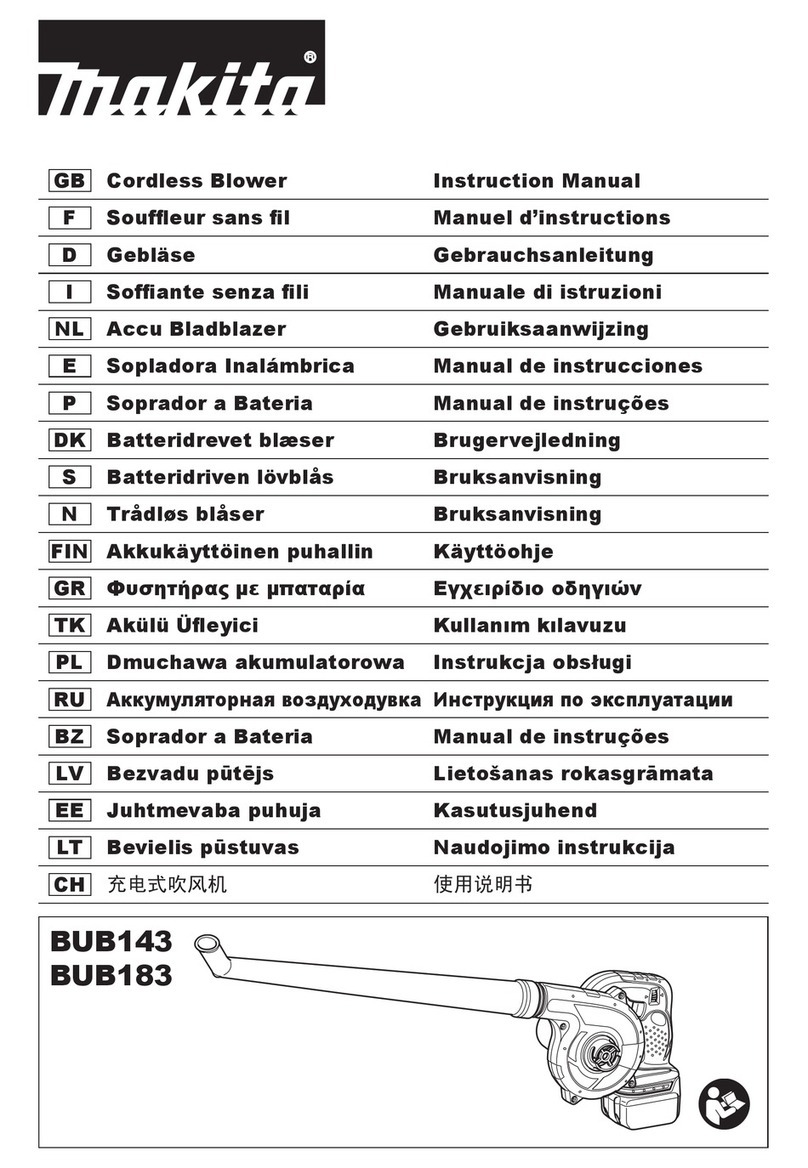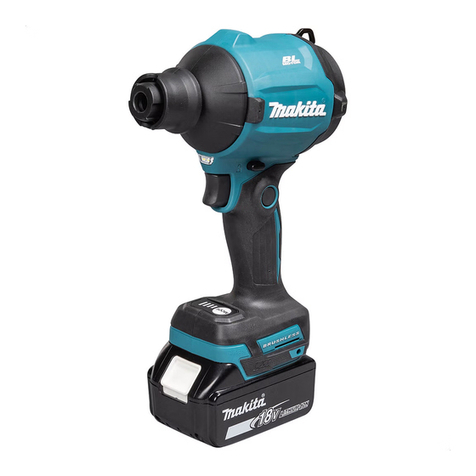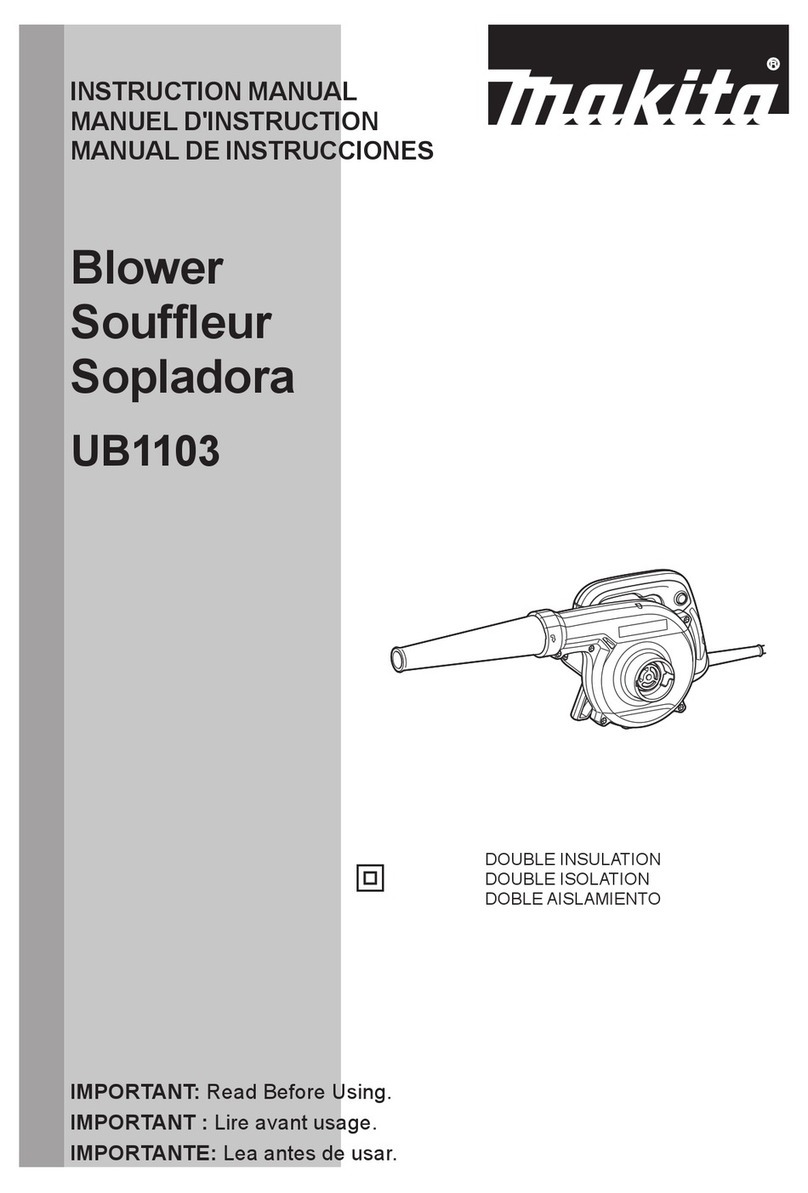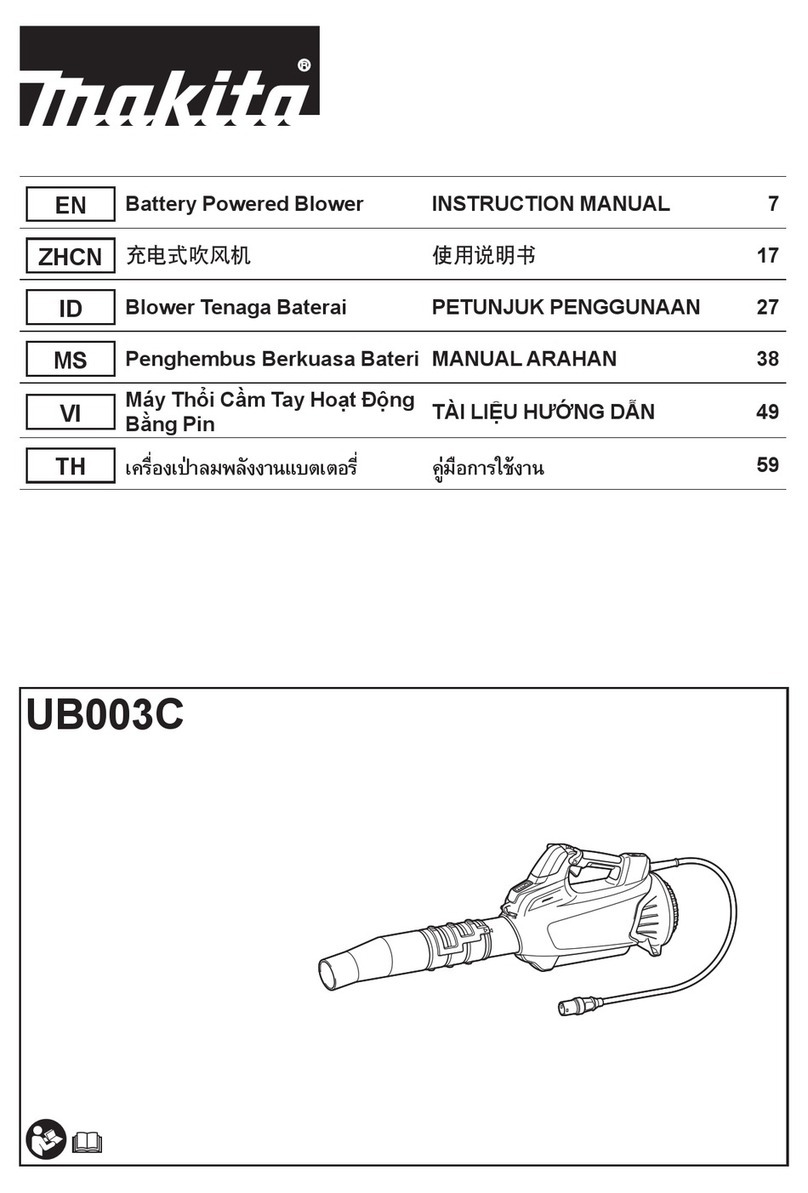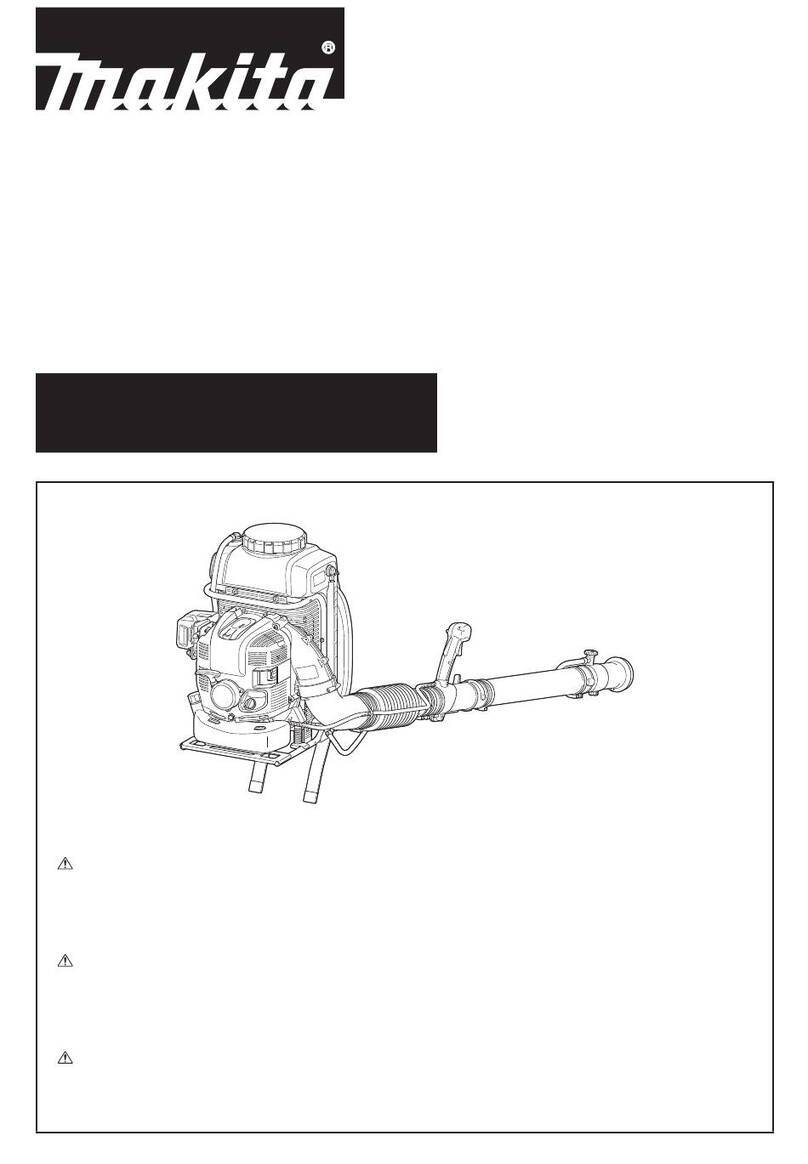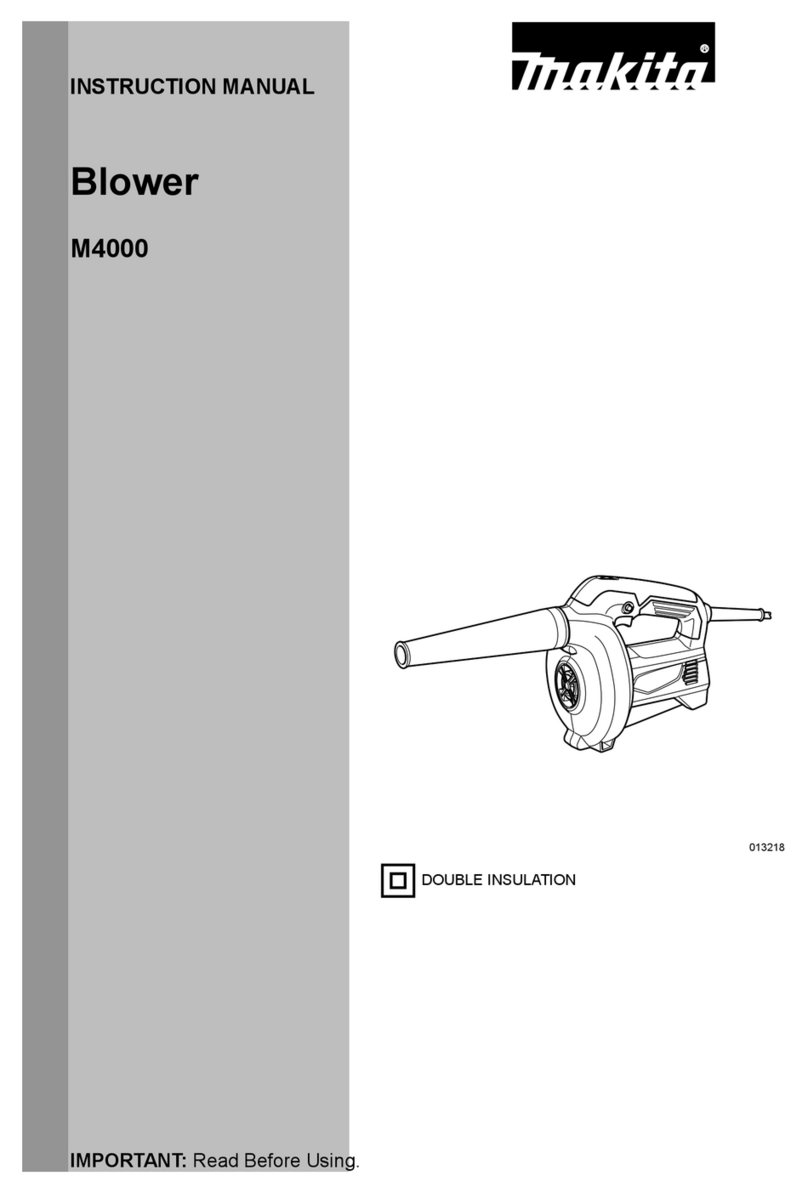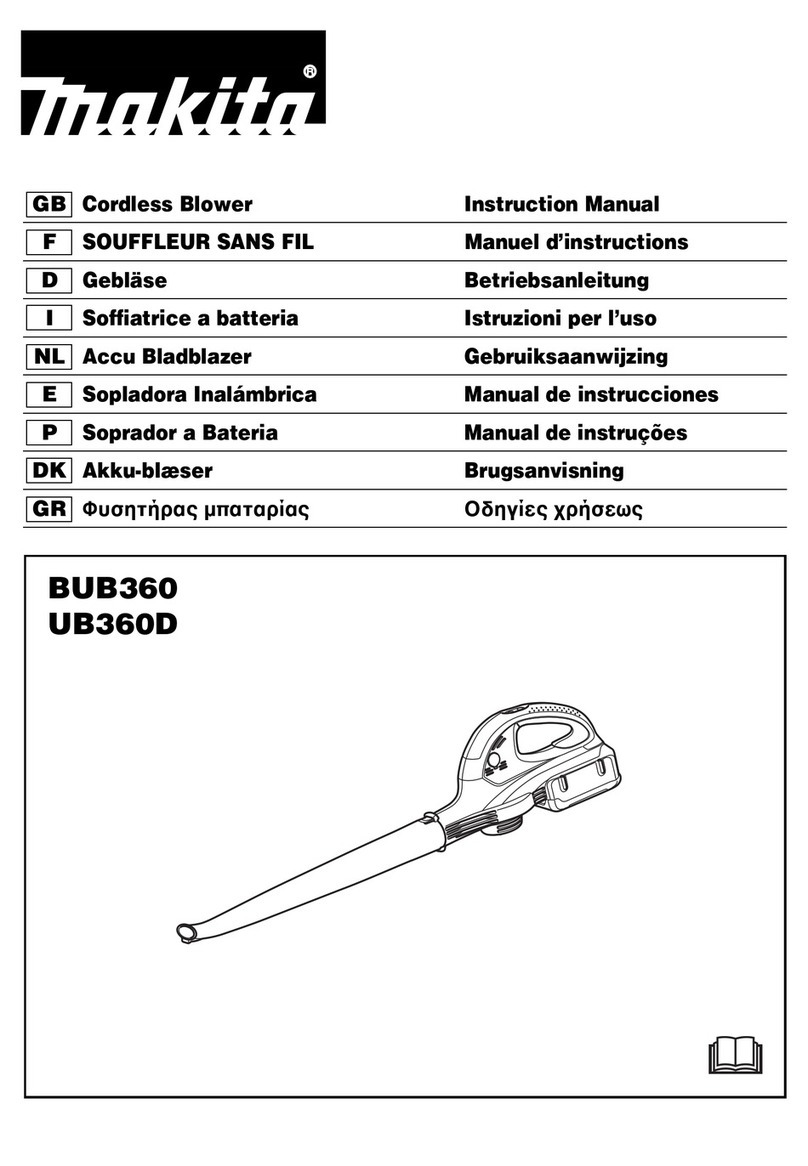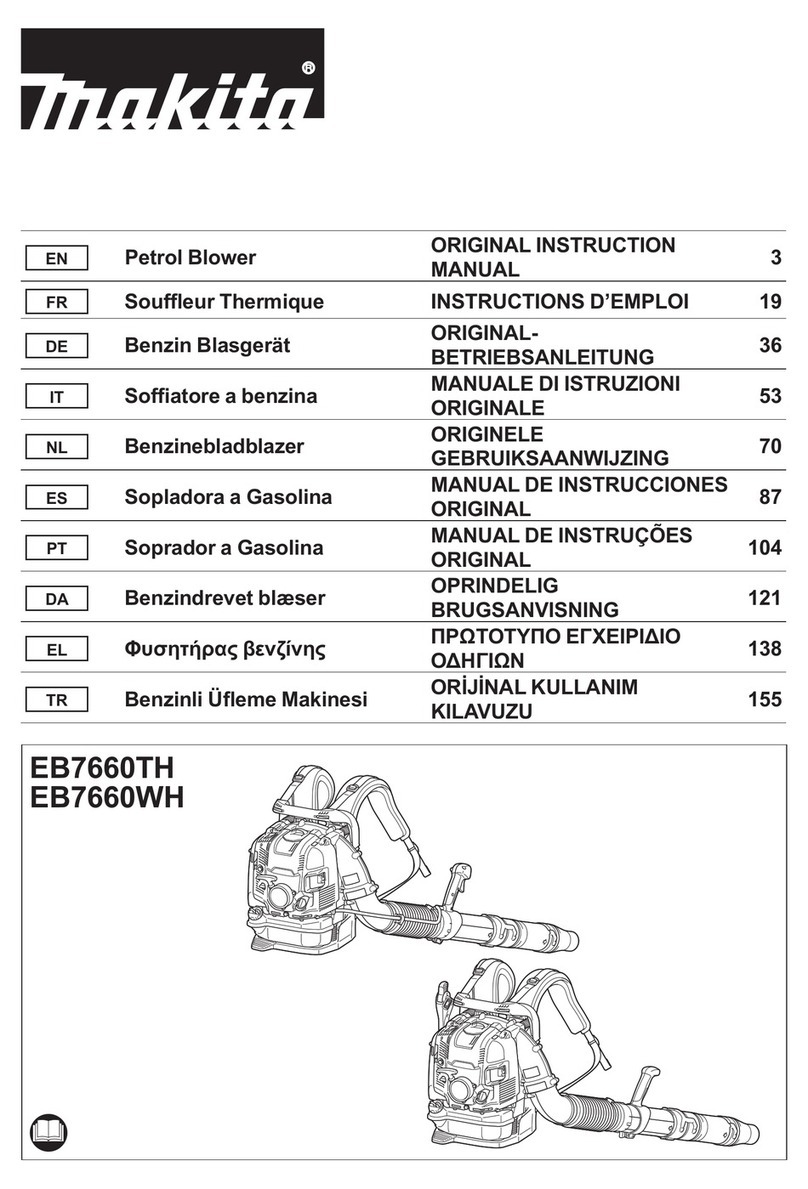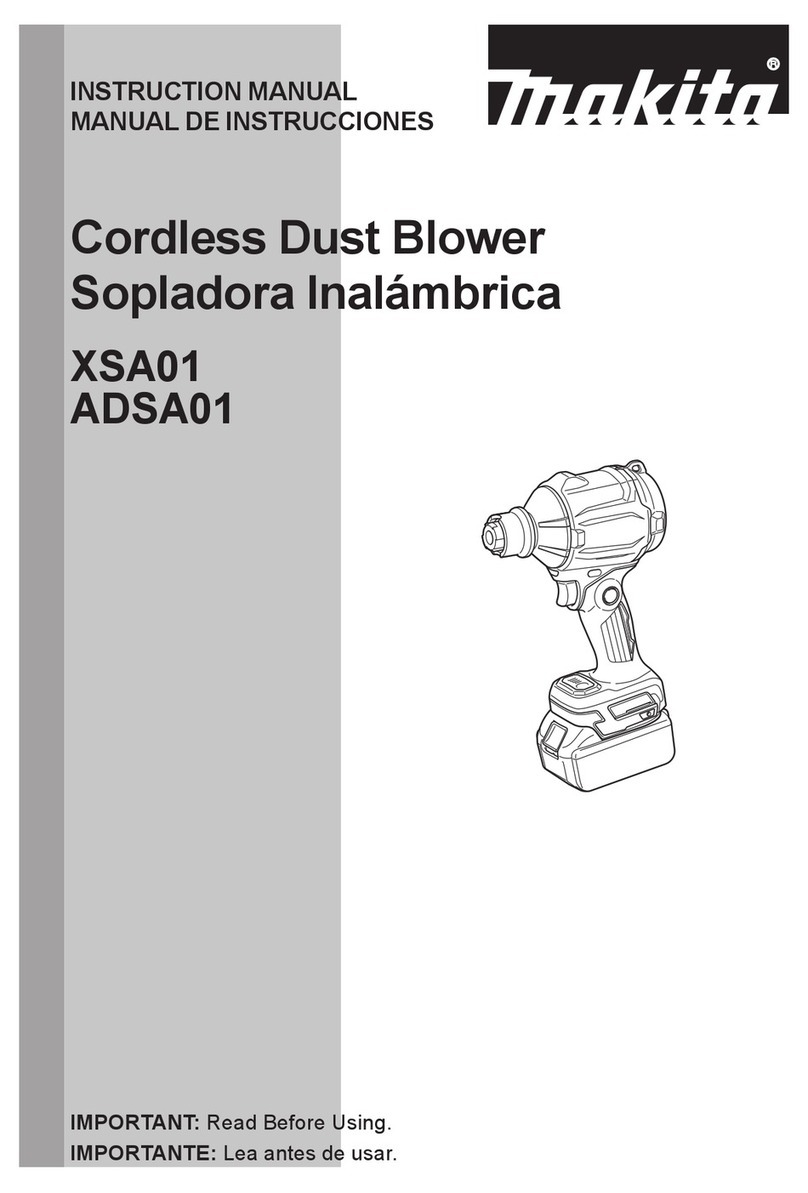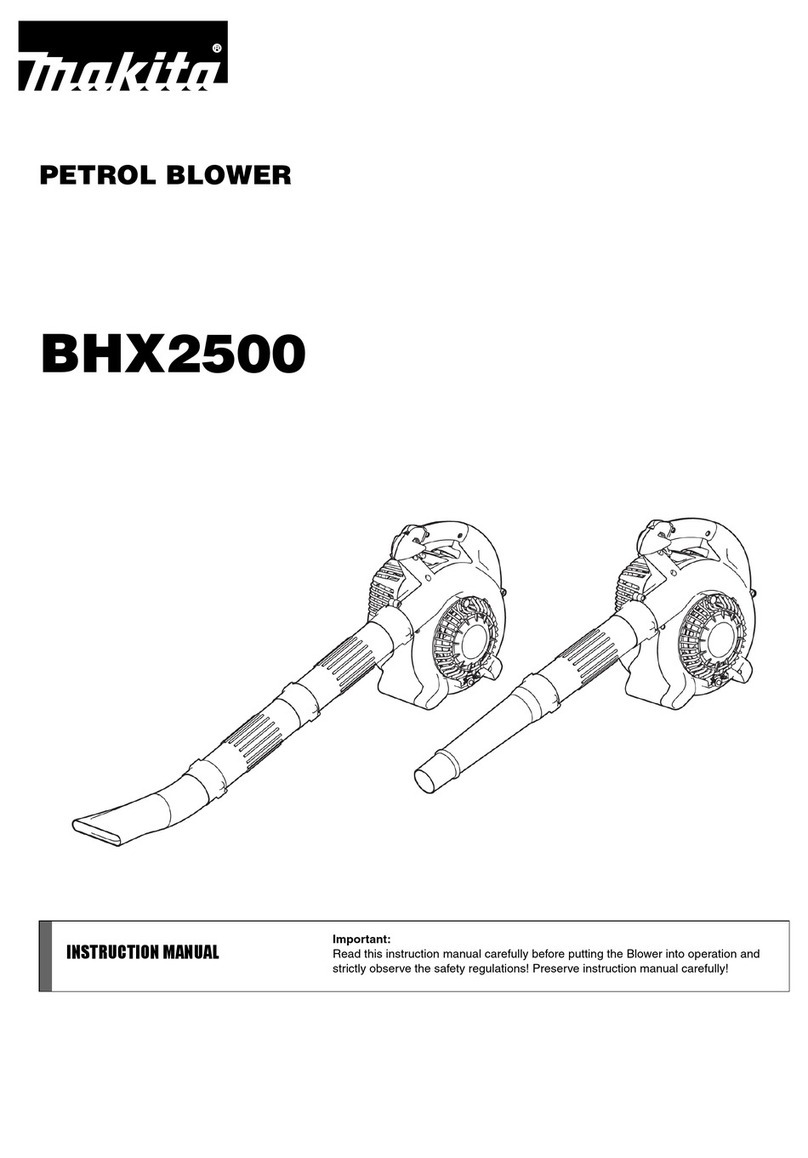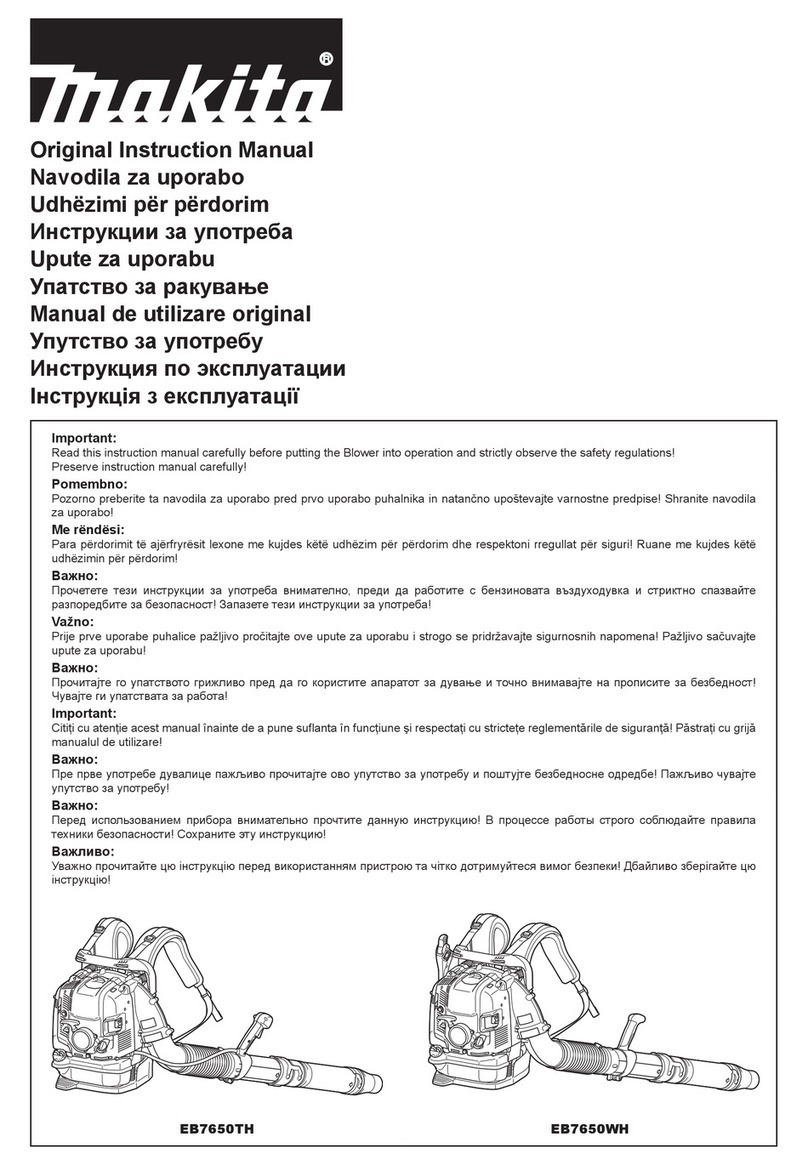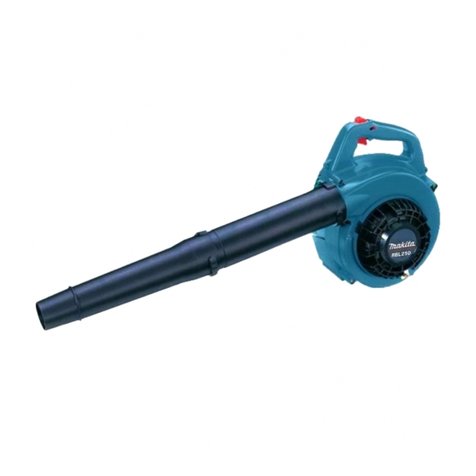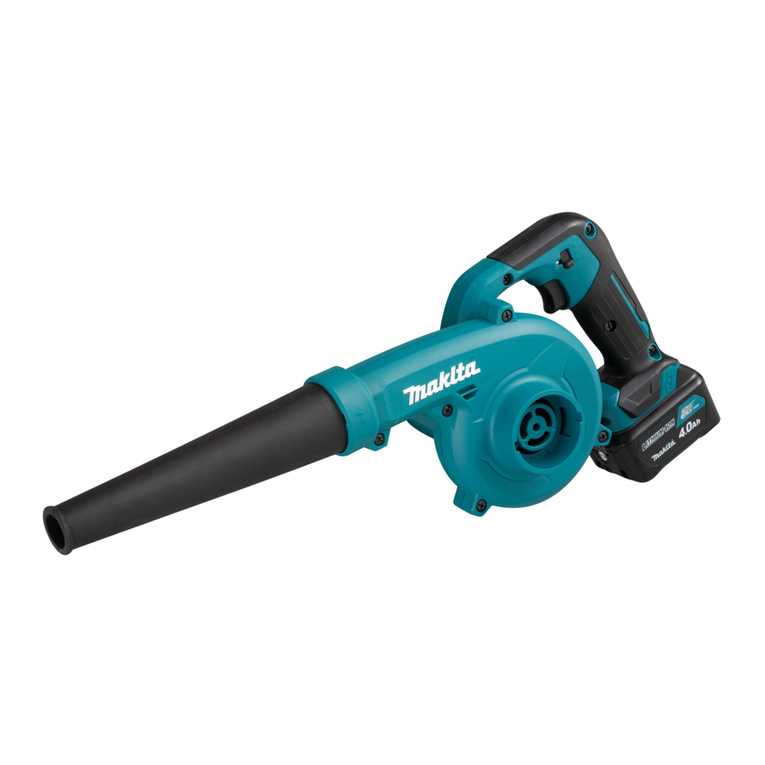
6ENGLISH
15. It is recommended to use the long nozzle so
the air stream can work close to the ground.
16. If the blower strikes any foreign objects or
should start making any unusual noise or
vibration, immediately switch o the blower
to stop it. Remove the battery cartridge from
the blower and inspect the blower for damage
before restarting and operating the blower. If
the blower is damaged, ask Makita Authorized
Service Centers for repair.
17. Do not insert ngers or other objects into
suction inlet or blower outlet.
18. Prevent unintentional starting. Ensure the
switch is in the o-position before inserting
battery cartridge, picking up or carrying the
blower. Carrying the blower with your nger
on the switch or energizing the blower that has
the switch on invites accidents.
19. Never blow dangerous materials, such as
nails, fragments of glass, or blades.
20.
Do not operate the blower near ammable materials.
21. Avoid operating the blower for a long time in
low temperature environment.
22. Do not use the machine when there is a risk of
lightning.
23. When you use the machine on muddy ground,
wet slope, or slippery place, pay attention to
your footing.
24. Do not use the machine in bad weather where
visibility is limited.Failuretodosomaycause
fallorincorrectoperationduetolowvisibility.
25. Do not submerge the machine into a puddle.
26. Do not leave the machine unattended outdoors
in the rain.
27. Do not use the machine in the snow.
28. During operation, keep the cord away from
obstacles. The cord caught by obstacles may
cause serious injury.
Maintenance and storage
1. Keep all nuts, bolts and screws tight to be sure
the blower is in safe working condition.
2. If the parts are worn or damaged, replace them
with parts provided by Makita.
3. Store the blower in a dry place out of the reach
of children.
4. When you stop the blower for inspection, ser-
vicing, storage, or changing accessory, switch
o the blower and make sure that all moving
parts come to a complete stop, and remove the
battery cartridge. Cool down the blower before
making any work on the blower. Maintain the
blower with care and keep it clean.
5. Always cool down the blower before storing.
6. Do not expose the blower to rain. Store the
blower indoors.
7. When you lift the blower, be sure to bend your
knees and be careful not to hurt your back.
8. When washing the machine, do not let water
enter the electrical mechanism such as bat-
tery, motor, and terminals.
9. When storing the machine, avoid direct sun-
light and rain, and store it in a place where it
does not get hot or humid.
10. When carrying the machine, be sure to hold
the machine rmly by holding the handle of
machine.
11. When carrying the machine, be careful not to
get the cord caught by obstacles.
Battery tool use and care
1. Recharge only with the charger specied by
the manufacturer. A charger that is suitable for
onetypeofbatterypackmaycreateariskofre
whenusedwithanotherbatterypack.
2. Use power tools only with specically desig-
nated battery packs.Useofanyotherbattery
packsmaycreateariskofinjuryandre.
3. When battery pack is not in use, keep it away
from other metal objects, like paper clips,
coins, keys, nails, screws or other small metal
objects, that can make a connection from one
terminal to another.Shortingthebatterytermi-
nalstogethermaycauseburnsorare.
4. Under abusive conditions, liquid may be
ejected from the battery; avoid contact. If con-
tact accidentally occurs, ush with water. If
liquid contacts eyes, additionally seek medical
help.Liquidejectedfromthebatterymaycause
irritation or burns.
5. Do not use a battery pack or tool that is dam-
aged or modied.Damagedormodiedbatteries
mayexhibitunpredictablebehaviourresultingin
re,explosionorriskofinjury.
6. Do not expose a battery pack or tool to re or
excessive temperature.Exposuretoreortem-
peratureabove130°Cmaycauseexplosion.
7. Follow all charging instructions and do not
charge the battery pack or tool outside the
temperature range specied in the instruc-
tions.Chargingimproperlyorattemperatures
outsidethespeciedrangemaydamagethe
batteryandincreasetheriskofre.
Electrical and battery safety
1. Do not dispose of the battery(ies) in a re.
Thecellmayexplode.Checkwithlocalcodesfor
possible special disposal instructions.
2. Do not open or mutilate the battery(ies).
Releasedelectrolyteiscorrosiveandmaycause
damagetotheeyesorskin.Itmaybetoxicif
swallowed.
3. Do not charge battery in rain, or in wet
locations.
4. Do not charge the battery outdoors.
5. Do not handle charger, including charger plug,
and charger terminals with wet hands.
6. Do not replace the battery with wet hands.
7. Do not replace the battery in the rain.
8. Do not wet the terminal of battery with liquid
such as water, or submerge the battery. Do not
leave the battery in the rain, nor charge, use,
or store the battery in a damp or wet place. If
the terminal gets wet or liquid enters inside of bat-
tery,thebatterymaybeshortcircuitedandthereis
ariskofoverheat,re,orexplosion.
9. After removing the battery from the machine or
charger, be sure to store it in a dry place.
